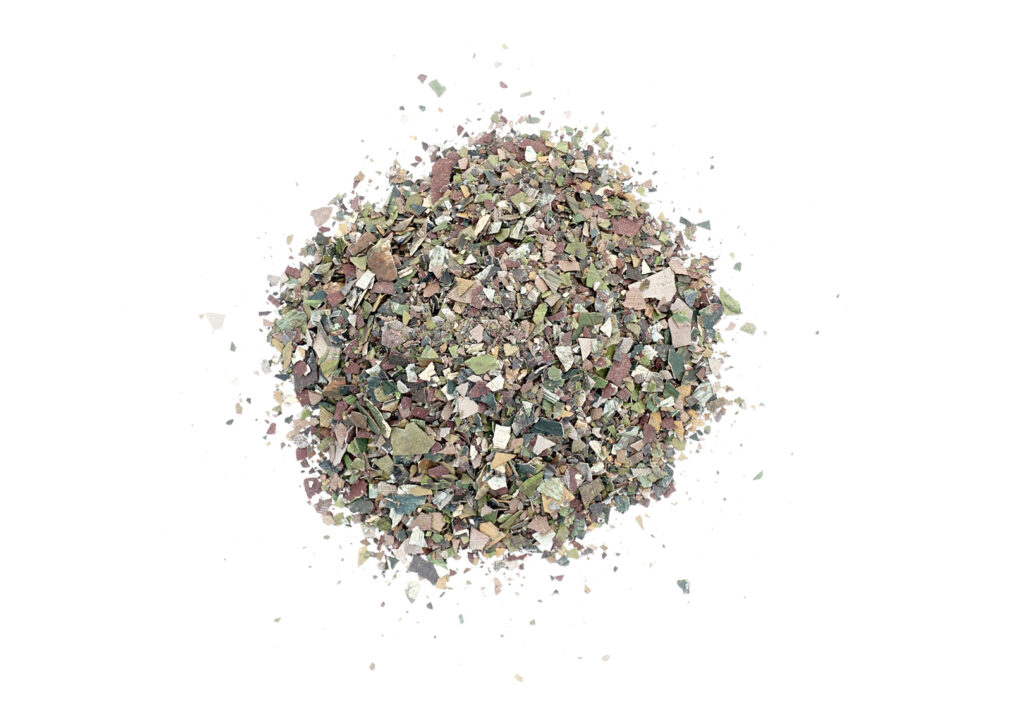Marjolein Knottenbelt – No Time

Mostra personale.
Comunicato stampa
Marjolein Knottenbelt
No Time
(a cura di Ilaria Monti)
Tele dipinte ridotte in macerie accuratamente conservate e accatastate, una pila di lettera mai aperte, una camicia ormai vintage che nessuno ha mai indossato e uno specchio interamente avvolto da una carta da parati retrò. Dietro le immagini e dietro gli oggetti, dove una vita scompare un’altra comincia, apparentemente, nel vuoto. L’avvicendarsi dei fenomeni di scomparsa e riemersione dei significati dettano ritmi e passaggi nelle varie fasi del ciclo di vita delle immagini e degli oggetti manipolati e raccolti da Marjolein Knottenbelt. Attraverso le sue opere, l’artista evidenzia una natura transitoria ed erratica, che disfa nel tempo le sue origini per rinnovarsi attraverso un’immaginazione relativa, individuale, futuribile.
L’occhio attento rende il mondo misterioso, scriveva Charles Simić ne La vita delle immagini. L’occhio attento intuisce il mistero come dimensione del tutto possibile: come quando, cancellato il volto, i soggetti ritratti diventano fantasmi di tutti e nessuno, quando uno specchio non riflette nulla, quando un messaggio non verrà mai letto. Dove si fa un passo indietro rispetto al visibile, dove spazio e tempo si annullano reciprocamente, nelle lacune dell’immagine e nel congelamento di oggetti e parole, là originano enigmi e indovinelli. Marjolein Knottenbelt osserva e interroga la vita delle cose per scombinarne e moltiplicarne il senso.
Nella serie Painting reverse, l’artista raccoglie dipinti realizzati da artisti sconosciuti, quelli che si trovano spesso nei mercatini o nelle case vecchie, ne gratta via la superficie pittorica fino a distruggere completamente o parzialmente l’immagine originale. Invertendo le regole della pittura, e operando quindi per sottrazione, l’artista rode l’opera altrui appropriandosene e diventando allo stesso tempo unica testimone del passato dell’opera, che viene raccolto e campionato nelle briciole di pittura accuratamente messe da parte. Se attraverso l’erosione e la raccolta di frammenti Knottenbelt interviene sul naturale, lento processo di deperimento dell’opera causandole vuoti e mancanze precoci, attraverso la foderatura degli specchi l’artista nega all’immagine ogni possibilità – solo il presente esiste nell’immagine riflessa. Come in certe usanze funebri che prevedono appunto la copertura degli specchi in presenza di un defunto per amplificarne l’assenza di vita, così l’artista ne riveste la superficie di carta da parati, mura la sua trasparenza insieme alle effigi dei corpi che, in passato, lo specchio ha ospitato al suo interno. Alterare, cancellare, rifiutare la vita delle cose, ma anche conservarla intatta per sempre. Sospesi tra le logiche del desiderio e dell’accumulo tipiche del collezionare, gli oggetti di Marjolein Knottenbelt sono dei reduci, sopravvissuti illesi e non toccati, destinati a viaggiare nel tempo con il proprio mistero di non appartenenza e inutilità, catapultati sempre altrove, discretamente fuori luogo e senz’altra storia che un ipotetico futuro. Contro l’isteria del consumo di ogni forma di produzione visiva e della sua permanenza nel regno digitale, l’artista rivendica per le sue opere un tempo asincrono e non lineare, un tempo di perdita, mutamento e indicibilità.
__________________________
Marjolein Knottenbelt (Rotterdam, 1972), vive e lavora a L’Aia, Paesi Bassi.
Il suo lavoro è basato sulla raccolta e manipolazione di oggetti e immagini. Attraverso il recupero e la ricontestualizzazione delle immagini, l'artista ricuce una rete di relazioni, funzioni, storie passate e ancora a venire. Il suo lavoro è stato esposto presso diverse gallerie e spazi indipendenti, tra cui De Galerie Intermezzo, Dordrecht; Galerie Walls, Amsterdam; Galerie Atelier de Fietsenstalling, Eindhoven.
ENG:
Paintings torn to pieces with their fragments stashed away, a pile of unopened letters, vintage shirts never once worn and a mirror entirely wrapped in old-fashioned wallpaper. Behind images and objects, one life disappears where another begins, apparently out of nowhere. The succession of disappearance, and the re-emergence of meaning, mark rhythms and passages throughout the life cycle of the works of Marjolein Knottenbelt, who manipulates and collects images and objects. In her works, she unveils a transient and erratic nature, which unravels its origins over time to renew itself through relative and individual imagination.
The attentive eye makes the world mysterious, wrote Charles Simić in The Life of Images. The attentive eye perceives mystery as the dimension of the all-possible: something similar happens when, once the face is erased from a portrait, the character becomes the ghost of all and no one, when a mirror does not reflect anything, when a message will never be read. By the time one takes a step back from the visible, where space and time nullify each other, within the voids of the image and in frozen words and objects, is where enigmas and riddles arise. Marjolein Knottenbelt observes and investigates the life of things to disrupt and multiply their meaning.
In the ongoing series Painting reverse, the artist collects paintings by unknown artists, those which often can be found in street markets or in old houses, and scratches away the paint surface until the image is completely or partially dismissed. By inverting the rules of painting itself, and therefore operating by subtraction of matter, the artist gnaws away at other artists' works, she appropriates them and becomes at the same the sole witness of the original image, whose remnants she painstakingly gathers and stores. While throughout the erosion and the collection of pictorial fragments Knottenbelt interferes in the natural, slow decay of the work, causing voids and premature damages. By coating mirrors she denies the image any possibility, since only present time can really exist in the reflected image.
In certain burial customs, in the presence of the deceased, mirrors are covered to amplify the absence of life. Likewise, the artist covers the mirror with wallpaper, walling in its transparency together with the effigies of those that once it hosted inside. Transforming, erasing, rejecting the life of things, but also preserving it forever. Suspended between the logic of desire and of accumulation typical of collecting, Marjolein Knottenbelt's objects act as survivors, unharmed and untouched, destined to travel in time, dragging the mystery of their origins and uselessness, always catapulted elsewhere, discreetly out of place and with no other history than a hypothetical future. Against the hysterical consumption of the visual production and its permanence in the digital realm, the artist reclaims for her works non-linear time imbued with loss, change and ineffability.
_________________________
Marjolein Knottenbelt (b. 1972, Rotterdam), lives and works in The Hague, Netherlands.
Her work involves collection and manipulation of objects and images. Through the recycling and recontextualization of images, the artist sews a network of relationships, functions, stories from the past and those yet to come. Her work has been presented at various independent spaces and galleries, such as De Galerie Intermezzo, Dordrecht; Galerie Walls, Amsterdam; Galerie Atelier de Fietsenstalling, Eindhoven.



